Note: Lauda Finem have this month (October 2012) been contacted by James Payton (the ex-cop turned PI) who had apparently stumbled upon this and other Lauda Finem posts.
Mr Payton has stated that Detective Malcolm Thomas’s police job sheet is a complete and utter fabrication and that he never spoke to Detective Thomas. Mr Payton further claims that the only cop he knew in Gisborne was ex-cop Steve Dimery and that he is the man that he called on “at home”. So its now clear that Thomas’s police job sheet had been written to deceive the courts – as a result of this new information Lauda Finem intend taking the investigation of this very old case a lot further.
Detectives Willcox and Thomas had been responsible for the National Business Review articles and much of the local media’s reporting. A plan was conceived which hopefully would provide more evidence of the Police and Crown Law abuses of Wanganui Computer records and the distribution of false information by Police and their associates – such as Paul Martens.
The strategy was developed around employing the services of a private investigator, not just any private investigator, he had to be an ex-cop and bent.
Initial inquiry pointed to Lewis Proctor (photo above) as being the man for the job. Proctor a former Detective Sergeant had left the force in 1982 – 83 under a cloud of alcohol fumes, apparently Proctor in a drunken rage had assaulted a detainee in an interview room and a number of his police colleagues whilst on a booze bender in the Papakura Police bar. In his defence, Proctor claimed he was suffering temporary insanity.
Proctor was perfect for the job, he wasn’t just temporarily insane he was obviously a completely unhinged head case, a real creep; more than just a little bent ; well qualified to get the inside information necessary to prove a conspiracy. Recently we have discovered that Proctor has had relationships with other notable cops, the likes of Wayne Idour, Police Commissioner Howard Broads porn flick buddy. Proctor was told that it was critical that his new client remain anonymous – initial contact having been made by telephone was then followed up with written instructions on who to contact the $1200 cash payment being hand delivered by courier to his office in Auckland.
The names listed in the instructions included those that McManus had mentioned in her conversations with the elusive Mr. Jonathan Egglestone. By this time it had also been established that crown solicitor Brent Stanaway and Craig Ruane of Western Ward and Lascelles and Raymond Donnelly & Co were likely providing Wanganui Computer records of children’s court proceedings (underNZ law YP’s young persons/children) unlawfully, they too were included on the list along with a very bent local crown solicitor, Phil Cooper, the bent cops Malcolm Thomas and Alan Davidson, a local union organiser, Paul Martens, and Bruce Johnstone, the editor of a local weekly tabloid the Eastland Sun.
Whilst Bruce Johnstone had not been named by McManus in her telephone conversations with Egglestone, he had however inexplicably taken to writing extremely malicious articles vilifying the brothers, often citing the spurious material Jenni McManus had written for the National Business Review.
Bruce Johnstone and his wife Janet had been recent arrivals in the town, keen to impress, they had also, obviously, settled on the “pissing in pockets” formula for winning friends and the trust of the local cops. Unfortunately for Bruce and Janet this particular “key to success” was not as useful as they might have hoped, later backfiring dramatically when their new mates, the same bent cop’s with whom they had conspired to conceal serious systemic corruption, turned on Johnstone.
http://www.som.cranfield.ac.uk/som/dinamic-content/videostreaming/som/ki/topics/20120501/video.mp4
Johnstone (above) perhaps, eludes to his gullibility in comments he would make many years later:
From time to time I may well have been unwittingly manipulated by people with their own agenda. It is an occupational hazard for journalists – especially inexperienced ones who are keen to break stories.
What exactly was I guilty of – believing and trusting a police officer?
In very similar circumstances to those of Ron Atkinson, Bruce Johnstone had far from clean hands, it had always been a case of two very dirty pots calling the kettle black – more about that in the book.
Also assisting with Proctors clients plan was an Auckland businessman and hospitality industry consultant Alex Melbourne; he had been engaged to cover in the event that a front man was needed. Proctor had been given a deadline in which to obtain the detail his client required. He was led to believe that the matter was urgent, as the client needed to cancel a contract with the subjects of the investigation – as much dirt as he could obtain was needed for that to happen.
Despite having been specifically told not to involve any one else Proctor’s next step was to sub-contract the work. The subcontracted investigator Jim Payton was unfortunately a local, so to speak, lived in Napier and as such knew Detective Malcolm Thomas personally, although, for reasons known only to Payton, he didn’t speak to Thomas first. Instead Payton’s first port of call was the office of the Northern Hotel and Restaurant Workers Union and its local Rep Paul Martens.
Martens as expected gave Payton everything he could including the false and defamatory material the local Police had provided months prior, copies of the defamatory letters he had received from Robert Hutcheon in Christchurch and additional sensitive material that he had obtained unlawfully from his friends in other government agencies.
Payton then turned his attention to Detective Malcolm Thomas, his visit to Thomas was not as one would have expected. He did not call on him at the police station, he waited until the Sunday morning and called on Thomas at his home. Payton then, in breach of specific instructions to the contrary, showed Thomas a copy of the clients brief he had received, along with his instructions, by fax from Lewis Proctor.
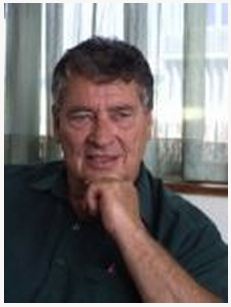
Bent ex-cop Steve Dimery, a man of mystery? The man that Detective Thomas neglected to include in his bogus police job sheet, that story coming soon.
Having read the brief Thomas immediately realised what was happening, he knew that he had been sprung. Instead of doing what an honest cop might and, having nothing to hide, sending Payton on his way empty handed . Thomas knew the names listed exposed him personally, even if he had simply sent Payton on his way empty handed he knew that Martens could not help himself.
Thomas was exposed and needed to shut the investigation down and quickly. He had an idea, one which he was going to try and benefit from – at least that’s what he thought. The following morning Thomas contacted the individuals on the list, those responsible, as suspected, for giving Payton the illicit information. This included the Crown Solicitors in Christchurch; he then telephoned Lewis Proctor in Auckland and together they conspired to discredit Proctors client and conceal the offending of the individuals on Proctors list.
Thomas and Nielson then called on Bruce and Janet Johnstone at the Eastland Sun and together they conspired to write an article that would attempt to humiliate the men behind the plot to expose the corruption.
Their plan however would eventually create more problems for Thomas, far from concealing the corruption by publishing the article Thomas’s narcissistic desire to gloat would in fact later evidence his own offending. Thomas had illegally obtained the telephone records from his contact inside Telecom, a senior manager that had previously been involved in Thomas’s illegal repossession’s, without obtaining the required search warrant.
With the records in hand however it dawned on him that he needed to cover the illegality of his actions. In applying for the warrant Thomas knew that he was required to allege an offence, under pressure he settled on forgery and false utterances. Thomas knowing the allegation was false then swore an affidavit and was given the warrant he should have obtained four days earlier.
Bruce Johnstone meanwhile had done as instructed and written a misleading article detailing the Police’s oh so clever discovery of the subterfuge. The brothers reasons for the plot, to reveal the criminal behaviour of the individuals on the list, was not mentioned. Johnstone’s report was published in the Eastland Sun on Saturday the 24th September 1988, the search warrant for the telephone records having been obtained the previous day; Friday the 23rd.
The problem for Thomas and Johnstone was a simple one, which neither had foreseen. The Eastland Sun was not printed in Gisborne, the paper was printed in Napier. It was very easy to establish that Johnstone did not have the required time to write the article prior to the deadline the printing contractor had imposed, given that the warrant had been obtained after the aircraft carrying the master copy had landed in Napier; at least two hours before the Court Registry was even open for business.
This then presented an anomaly; a telephone call was made to the company contracted to print the paper, they confirmed that the master copy normally arrived by Eagle Air, a small local airline, at 7.30am on Friday mornings, the paper was then printed that evening and dispatched by overnight road transport; arriving in Gisborne early on Saturday mornings ready for distribution. Further confirmation of this was then sought using various ruses from the Eastland Sun and Bruce Johnstone himself.
Thomas eventually realised that they had stuffed up so he and Dave Nielson meet with Janet and Bruce the following week and planned a second article; designed as a further distraction. The fact that the cops and Johnstone had been meeting was evidenced in a taped telephone call after a tip off by an honest cop at the Police station.
It was logistically impossible for Johnstone to have written the article and then had it at the printers in time for the print run if the telephone records had been, as claimed, obtained on the Friday; the only possible explanation – Johnstone had to have had more time. In turn this meant that the telephone records he had relied on, confirming the plot, had obviously been obtained by Thomas prior to the warrant being issued.
If this was in fact what had happened then Thomas, in addition to obtaining the records without a warrant, had seriously mislead the Court; one offence had now become two. Local police command at the time refused to co-operate or investigate, deciding instead to conceal the evidence – two decades later conclusive evidence of Thomas’s offending was eventually released, perhaps unwittingly – one of Detective Thomas’s own job sheets.
According to that document Jim Payton had called on Thomas at home on the morning of Sunday the 18th September 1988, the following day Monday the 19th Thomas contacts the parties on Proctors list, he details the fact that some had already given Payton compromising and sensitive information, Thomas then conspires, with those who had, to conceal their offending.
Note: In the job sheets 1 & 2 (left) you’ll notice that the details of one of the parties Thomas contacted have been redacted. We believe that party to be none other than the Crown Law Office in Christchurch, Raymond Donnelly & Co or Western Ward and Lascelles another Christchurch Law Firm. The fax number they sent their tranche of documents to is still visible: 03 661-521. The number is one digit different to another Number Thomas had illegally obtained the records for, noted at the bottom of the same page: 03 661-520.
These two numbers belonged to the brothers Christchurch solicitors, Oldham Cullen & Co, Proctor had been given the firms details to have information faxed too. We believe that the documents received by Oldham Cullen and Co were the unlawfully obtained Wanganui computer files the brothers had hoped for. Tuesday 2oth Thomas obtains the telephone records without a warrant and then calls on Bruce and Janet Johnstone at the Eastland Sun.
According to Thomas’s notes Johnstone had his own motive for going along with the bent cop’s. Johnstone must have known that what he had done on behalf of the cops was criminal, We know for certain that he was terrified of being sued by the brothers. Thomas says so in his police job sheet, noting the tort amount of $27 million.
Together they conspire to print the article. Thursday the 22nd Thomas realising his vulnerability in having failed to obtain a warrant conspires with Lewis Proctor to manufacture the false charges, Friday 23rd Thomas obtains a warrant after swearing a false affidavit and misleading the court. Saturday the 24th the article appears in the Eastland Sun.
The brothers at the time knew that the warrant had definitely been issued on Friday 23rd, an honest journalist working on a soon to be published story exposing the corruption had in fact obtained a copy from the local court registry. Johnstone at the time that story was published, “Front Page” in the Sunday News, retaliated penning an editorial vilifying the brothers and exonerating the police involved by inferring to his readers that the warrant had been obtained earlier.
Johnstone’s editorial, however, would further evidence “after the fact” police corruption, we know that very senior police intervened and had the second installment of the Sunday News report on police corruption pulled. They achieved this by threatening to deny the editor and his reporters police media releases, effectively, making them all pariahs, persona non grata. The threat worked, which in itself is further evidence of serious corruption and the level to which it permeated police ranks; in fact all the way to the top, the office of the Commissioner John Jamieson who was obviously hell-bent on a cover-up.
The actions of Lewis Proctor should not escape scrutiny either. Proctor was offered an assignment, which he immediately accepted taking the $1200.00 in cash. The brief was clear and provided the names of the people he was to contact; his clients had a legitimate right to be investigating the serious criminal activity of those they had named in the list amongst them systemically corrupt and violent police officers. Proctors subsequent actions in failing to look after the interests of his clients, instead preferring to join corrupt police colleagues so as to conceal their offending speak volumes about Proctors own values and his predilection for corrupt behaviour.
Proctor knew that Thomas and others were committing serious criminal offences and yet he decided to take the cash and then shaft his client by covering for his corrupt Police mates. Ironically, years later, Proctor would be asked for comment on whether or not corrupt police officers illegally obtained Wanganui computer records for their own purposes. Proctor was guilty of this behaviour on a regular basis and yet he is quoted as saying:
In some cases, private investigators would pay officers “under the table” for information that could assist with their inquiries, one investigator told the Herald on Sunday. Another, Auckland private investigator Lew Proctor, said: “It’s not something we do, but I have no doubt that it goes on.”
Proctor was guilty of facilitating the theft of Wanganui computer records, that’s why he was hired; the brothers knew he could with little effort; which obviously would have then evidenced what had been happening in Gisborne.
Proctor was also a party to the various other offences that Thomas would subsequently commit by conspiring to lay false charges against the brothers, Proctors clients, so as to conceal the criminal offending of Thomas – both men knew that no offence had been committed. Both men were experienced detectives and as such would have been well aware that the false charges would never have resulted in a successful prosecution, ultimately needing to be withdrawn – which they were.
Thomas in his job sheet, inexplicably and somewhat strangely, makes a lot of noise about the brothers brief being on fax paper, then using his and Paul Martens alleged observation to claim that the document had been faxed by the brothers from Gisborne.
This was of course a total fabrication. On the face of it the document, contrived by Thomas, appears to be in some way designed to make him look like an observant and very competent investigator with valid reasons to continue his investigation. The truth however was that the brief and the $1200.00 “cash” was delivered to Proctors office in Auckland by hand – Proctor confirms as much, by Thomas’s own account in the very same report, then there is the simple fact that its physically impossible to fax $1200.00 in cash.
Another anomaly in Thomas’s job sheet is the claim (via Martens) that Murray Bradley of Baycom had witnessed brothers using that companies fax machine, why would they, the brothers were technologically advanced and had their own state of the art office equipment, including fax machines. This is evidenced by the (contemporaneous) faxed documentation the authors of this blog now hold
The faxed copy Thomas refers to was obviously Jim Payton’s, Proctor had clearly faxed it to Payton in Napier with the job and instructions to remove any identifying details. Detective Thomas was not the sharpest knife in the drawer. Disturbingly, looking at Thomas’s paperwork 23 years on, neither were his superiors.
Lewis proctor was a cop that had turned bad, a drunk who on occasion temporarily suffered from a peculiar type of violent insanity and a racist who shafted his clients in their legitimate pursuit of the evidence of offending by corrupt Police officers. Proctor, clearly still corrupt, works as a private investigator in south Auckland – still trying hard to shaft people. Again and again this systemically corrupt individual has proven that he is not fit to hold a license – yet he still does.
References
https://talent.me/bruce-johnstone
http://nixty.com/eportfolio/bruceajohnstone/
http://www.humanitiesresearch.net/users/individuals/johnstone_bruce
https://www.facebook.com/Study.Edge.Study.Skills
http://www.som.cranfield.ac.uk/som/p16100/Knowledge-Interchange/Cranfield-On/Hot-Topics-by-Date
http://thehumanfactor.in/dtdiy/dtdiy-story.asp?s_id=57&pageno=1
Johnstone B (2011) Go global to grow. Management Focus, (31) 20-23.
Johnstone B (2011) Themes and Issues in Internationalisation and Sustainability. XXII ISPIM Annual Conference, Hamburg12- 15 June 2011.
Johnstone B A (2008) <p>Improving the Framework for Entrepreneurship and Innovation in New Zealand</p>. XIX ISPIM Annual Conference, Tours, France15- 18 June 2008.
Johnstone BA (2007) <p>Ethnographic Methods: Discovering insights for innovation management in cultural and social settings.</p><p> </p>. XVIII ISPIM Annual Conference, Warsaw17- 20 June 2007.
Johnstone BA (2006) Supporting a Developing Network of Entrepreneurs: Implications for public policy from an ethnographic study of an emerging aquaculture cluster and its institutional framework in New Zealand. XVII ISPIM Annual Conference, Greece11- 14 June 2006.
Johnstone B (2006) Aquanauts of the Southern Pacific: an ethnographic study of emerging aquaculture entrepreneurs in Gisborne, New Zealand. IGU Commission on the Dynamics of Economic Spaces (Annual Meeting) , Auckland 27 June- 01 July 2006.
Johnstone Bruce A (2006) Institutions Advising Entrepreneurs: A Case Study of the Gisborne Aquaculture Cluster. Melbourne, Victoria, Australia.
Book chapters
Johnstone B (2006) Ethnographic Methods in Entrepreneurship Research. Handbook of Qualitative Research Methods in Entrepreneurship, Neergaard H, Ulhøi J (ed.). Edward Elgar.
Johnstone Bruce A (2005) Changing the Game: Entrepreneurs bring Networks to Small Markets. The Great New Zealand Radio Experiment, Karen Neill and Morris W. Shanahan (ed.). Thomson Learning/Dunmore Press.
Reports
Johnstone B (2011) SME Projects: Measuring the Impact and Learning the Lessons.
Related articles
- Geoffrey Palmer, John Jamieson and the exculpation of a very bent cop (laudafinem.wordpress.com)
- Jenni McManus the nexus of media malfeaseance (laudafinem.wordpress.com)
- Criminal conspirator and fraudster Dr Bruce Johnstone hurriedly leaves New Zealand shores (laudafinem.wordpress.com)
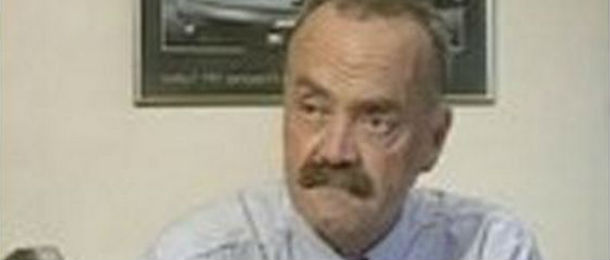


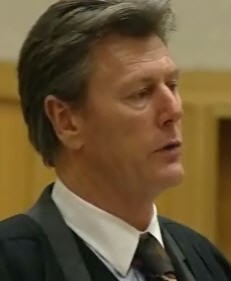
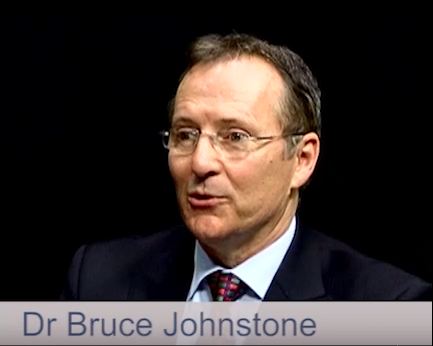
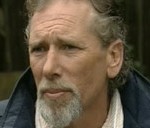
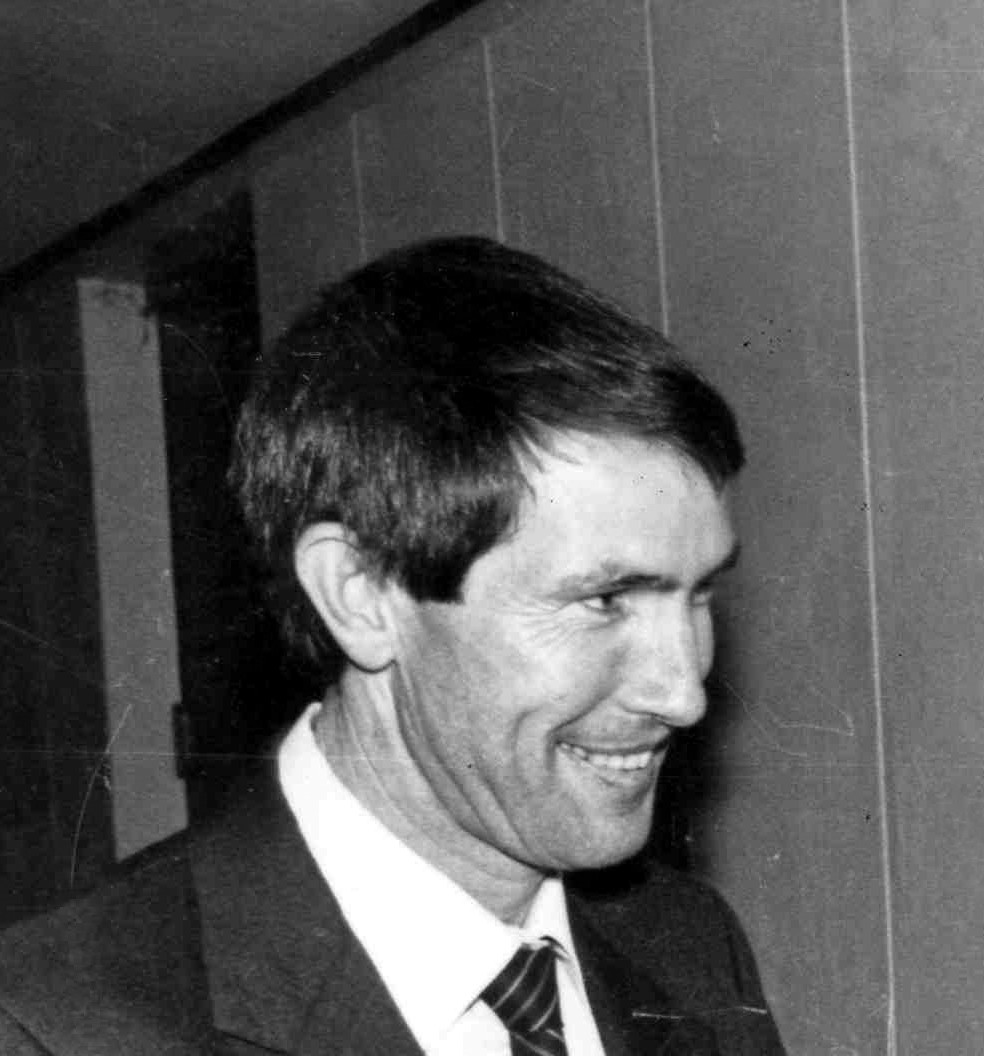

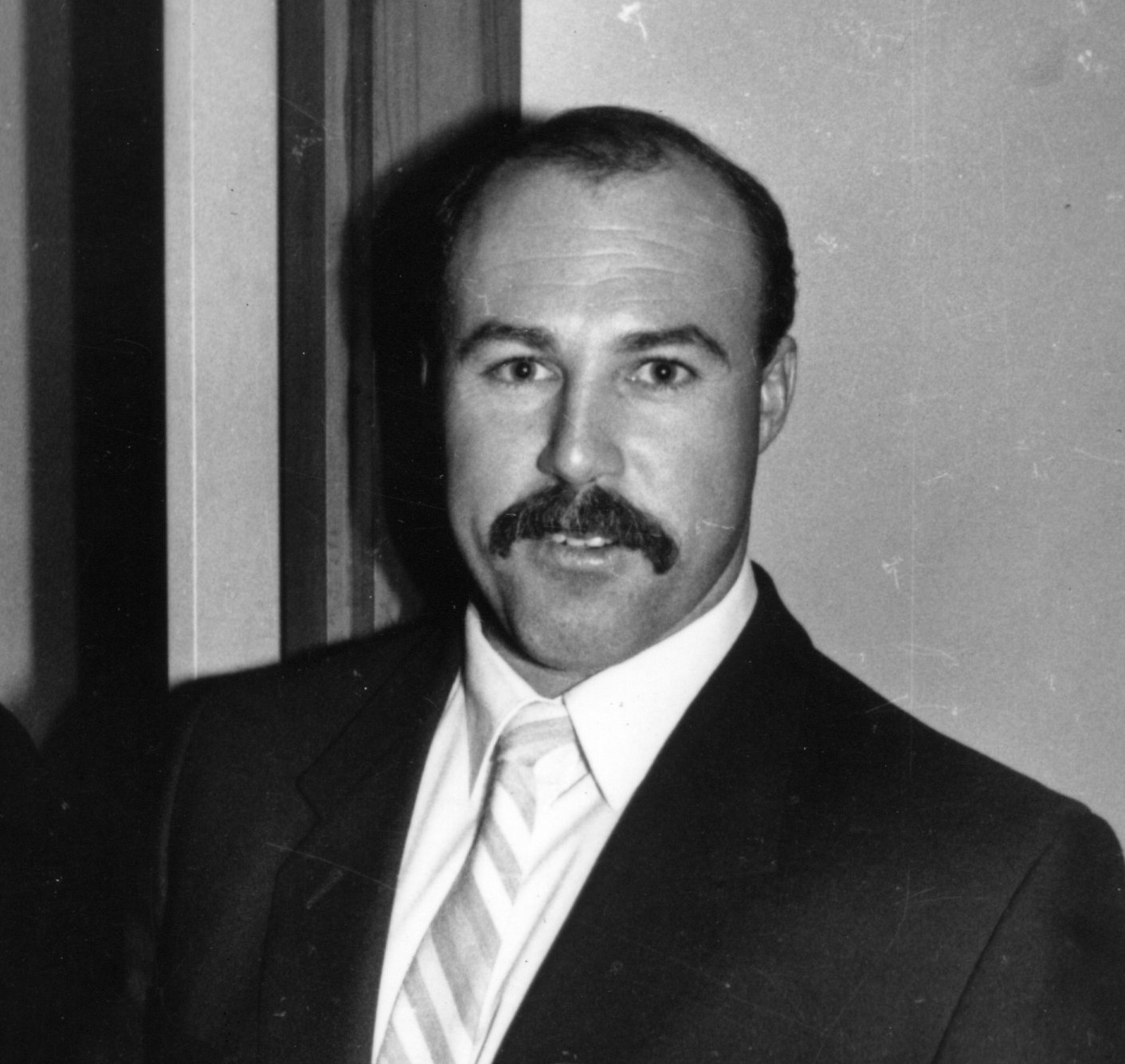





No Comments
In 1988 I owned and edited a feisty little local paper in Gisborne.
From time to time I may well have been unwittingly manipulated by people with their own agenda. It is an occupational hazard for journalists – especially inexperienced ones who are keen to break stories.
However I can tell you I never knowingly colluded with bent cops.
What exactly was I guilty of? Believing and trusting a police officer?
Now, 23 years later, you are implicating my wife and me in all this. And using current pictures of us. This is a little unfair and unfounded don’t you think? I notice you are preserving your own privacy with a pseudonym. Who exactly are you?
We think you Bruce are an intolerable liar and an accomplished bullshit artist, readers can checkout LF’s response to Bruce’s comment here